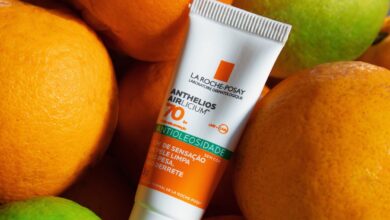
In the pursuit of maintaining healthy and glowing skin, it is crucial to adapt your skincare routine to the various climates you may encounter. Stylish.ae presents “A Guide to Skin Care for Different Climates,” a comprehensive article that aims to equip you with the knowledge and tools necessary to nurture and protect your skin in any weather condition. Whether you are facing the harsh dryness of a desert climate or the intense humidity of a tropical paradise, this guide will provide invaluable insight and expert advice to ensure your skin remains radiant and resilient.
Understanding the Impact of Climate on Skin
When it comes to skincare, understanding the impact of climate on your skin is crucial for maintaining its health and appearance. Different climates can have various effects on the skin, and adapting your skincare routine accordingly is essential. Whether you live in a hot and humid climate, a dry and cold climate, an arid and desert climate, a tropical and rainy climate, a temperate and changing climate, a polluted and urban environment, a high altitude and mountain climate, or a humid and rainforest climate, there are specific skincare tips to keep in mind to keep your skin looking its best.
How Different Climates Affect the Skin
Before diving into specific skincare tips for different climates, it’s important to understand how each climate can affect the skin. In hot and humid climates, excessive sweating can lead to clogged pores and breakouts. Dry and cold climates can strip the skin of its natural oils, leading to dryness and flakiness. Arid and desert climates can cause moisture loss and increased sensitivity.
Tropical and rainy climates can lead to increased humidity, which can trigger breakouts and skin irritation. Changing climates can disrupt the skin’s balance and require regular adjustments to skincare routines. Polluted and urban environments can expose the skin to harmful pollutants, leading to dullness and premature aging. High altitude and mountain climates can be harsh on the skin, causing dryness and windburn. Humid and rainforest climates can lead to excess oil production and congestion. Understanding these effects will help you adapt your skincare routine accordingly.

Skin Care Tips for Hot and Humid Climates
Living in a hot and humid climate requires special attention to protect your skin from the sun’s harmful UV rays. Sunscreen should be an essential part of your skincare routine, with a broad-spectrum SPF of at least 30. Additionally, incorporating lightweight moisturizers and products that control oil production can help prevent clogged pores and breakouts. Opting for non-comedogenic products will minimize the risk of pore blockage and acne formation.
Skin Care Tips for Dry and Cold Climates
In dry and cold climates, moisturization is key. Using a rich and nourishing moisturizer is essential to combat dryness and replenish the skin’s barrier. It’s important to apply sunscreen even in winter months, as the sun’s rays can still cause damage. Avoiding hot showers and excessive exfoliation is crucial to prevent further drying out the skin.
Skin Care Tips for Arid and Desert Climates
Hydrating and replenishing moisture is essential in arid and desert climates. Using a hydrating serum or facial oil can provide essential hydration to the skin. Sun protection is crucial as intense sun exposure can lead to a higher risk of premature aging and sun damage. Avoiding harsh ingredients and heavy products is recommended, as they can further strip the skin of much-needed moisture.
Skin Care Tips for Tropical and Rainy Climates
Tropical and rainy climates require extra attention to prevent bacterial and fungal infections. Using antibacterial cleansers and incorporating products with antifungal properties can help prevent these issues. Opting for water-resistant and sweat-proof skincare products will ensure they stay on the skin despite the high humidity. Balancing moisture levels by using lightweight and non-greasy moisturizers is crucial to prevent excessive oil production and breakouts.
Skin Care Tips for Temperate and Changing Climates
In temperate and changing climates, gentle exfoliation is necessary to promote cell turnover and keep the skin looking fresh. Adapting to seasonal changes by adjusting skincare products according to the weather can help maintain the skin’s balance. Layering skincare products can provide added protection and moisture to the skin.
Skin Care Tips for Polluted and Urban Environments
Living in polluted and urban environments exposes the skin to harmful pollutants. Cleansing the skin thoroughly to remove these pollutants is crucial. Using products that enhance the skin barrier function, such as moisturizers with antioxidants and ceramides, can help protect the skin from environmental damage. Incorporating antioxidant-rich products can further combat the effects of pollution on the skin.
Skin Care Tips for High Altitudes and Mountain Climates
Protecting the skin from harsh winds and cold temperatures is essential in high altitude and mountain climates. Using a moisturizer with a thicker consistency can provide extra protection and hydration. Adjusting to the elevation is important, as the change in altitude can affect the skin. Special attention should be given to lip and eye care, using products that offer nourishment and protection.
Skin Care Tips for Humid and Rainforest Climates
Balancing moisture levels is crucial in humid and rainforest climates to prevent breakouts and excessive oil production. Choosing lightweight and breathable skincare products can help the skin stay comfortable and prevent congestion. Protection against humidity-induced skin issues can be achieved by using products formulated to control excess moisture without drying out the skin.
Skin Care Tips for Coastal and Saltwater Climates
Protecting the skin from saltwater and UV damage is essential in coastal and saltwater climates. Using sunscreen with a high SPF and reapplying regularly, especially after being in the water, is crucial. Anti-oxidant and anti-inflammatory care can help combat the effects of saltwater on the skin. Replenishing lost moisture by using hydrating products can help prevent dryness and maintain healthy-looking skin.

In conclusion, understanding the impact of climate on your skin and adapting your skincare routine accordingly is vital for maintaining the health and appearance of your skin. Whether you live in a hot and humid climate, a dry and cold climate, an arid and desert climate, a tropical and rainy climate, a temperate and changing climate, a polluted and urban environment, a high altitude and mountain climate, or a humid and rainforest climate, there are specific skincare tips to keep in mind. By following these tips, you can ensure that your skin remains healthy, radiant, and well-protected regardless of the climate you are in.




